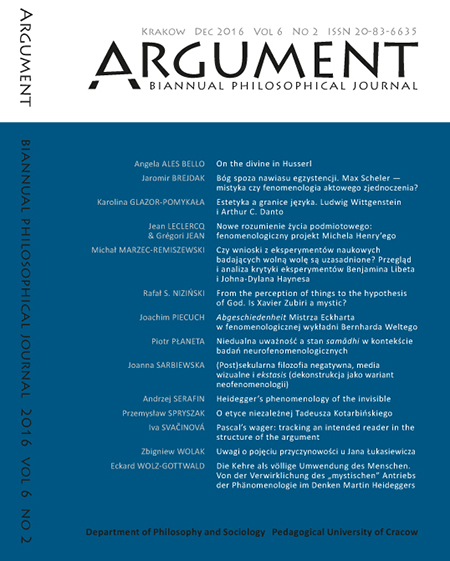Niedualna uważność a stan samādhi w kontekście badań neurofenomenologicznych
Keywords:
meditation, dhyāna, nirbīja‐samādhi, classical Sāṁkhya‐Yoga, Theravada Buddhism, Tibetan BuddhismAbstract
Nondual awareness and the state of samādhi in the context of the neurophenomenological research: The aim of this paper is to compare various meditative states, such as Buddhist dhyāna‐s, yogic nirbīja samādhi and nondual awareness (Tib. gñis‐med). The primary sour‐ ce texts I refere to are Yogasūtras of Patañjali, Ānāpānasmṛtisūtra (MN 118), Samādhisūtra (AN 41), The Tibetan Yogas of Dream and Sleep. I also discuss some relevant claims of contemporary empirical studies. First, I define the key terms used in Eastern meditation studies as well as in neurophenomenology, a contemporary method applied to examining the meditative states of mind, such as samādhi, dhyāna, and śamatha. Inspired by Shinzen Young, I distinguish three groups of meditative states that might be identified with nondual awareness. These three groups are: the second, the third and fourth Buddhist dhyāna being equivalent to nirvicāra samādhi and nirānanda samādhi in the classical Indian yoga; nirbīja samādhi and nondual awareness, typical to the Mahayāna contemplative traditions. I explain why we can recognize each of the above states as nondual awareness and how they differ from each other. Then, I make a comparison between meditation practice explained in Ānāpānasmṛtisūtra and nondual awareness presented in the Tibetan Buddhism. Besides, I discuss the above kinds of mental states in terms of recent neurophenomenological findings. While doing so, I am trying to demonstrate that our understanding of meditation can benefit from the empirical studies which help us to objective this kind of subjective experience, to some degree, if they are given an adequate place in our study.


